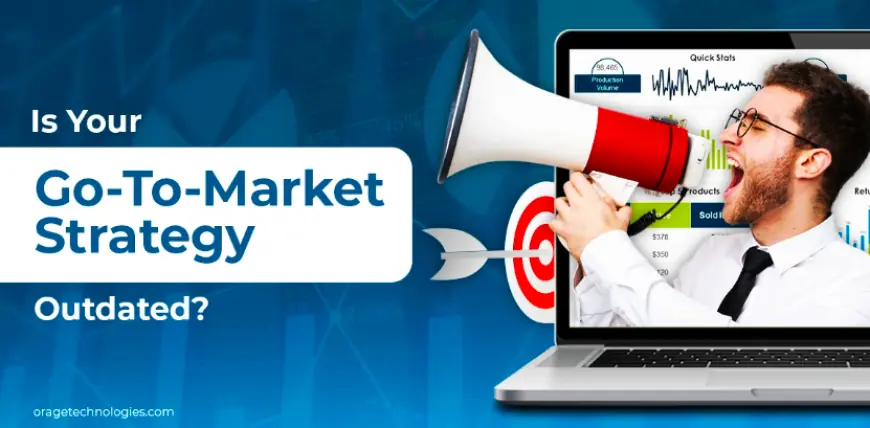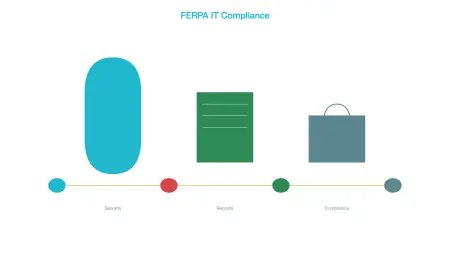Revamp Your Go-To-Market Strategy: Secrets to Winning in Today’s Market
The GTM playbook is being rewritten because buyer expectations have changed, revenue teams are working more closely together, and AI and data-driven tools are becoming more common.

In a fast-paced business world, a successful Go-To-Market Strategy lays the groundwork for launching products successfully and maintaining expansion. Unfortunately, many businesses use outdated tactics and miss out on connecting with present-day consumers. The most successful teams today are adopting innovation, agility, and customer-informed actions to compete. In this blog post, we will discuss how to modernize your Go-To-Market Strategy so that you can be successful by 2025. You can expect some questions that require critical thought and actionable insights to begin to execute on with this blog post to develop a strategy that will drive results. Let’s get into what it takes to be competitive.
What Makes a Go-To-Market Strategy Winning Today?
A winning Go-To-Market Strategy also connects your product, audience, and market. Begin by identifying your ideal customers by building comprehensive personas based on demographics, behaviors, and requirements. You should then create a value proposition that meets their needs resulting in identifying and alleviating their pain points. You can also use survey data or social platforms like X to identify a customer's priorities. You can also utilize digital tools such as AI-powered analytics to help you predict trends and optimize timing. In addition, you should reflect on using your Go-To-Market strategy that can adjust to the market when changes happen. With an emphasis on precision and adaptability, you can provide your product maximum exposure.
Why Are Old Go-To-Market Strategies Falling Short?
Old Go-To-Market Strategies often struggle to adapt to current situations. For example, if your go-to-market plan relies on old market research, you are likely not targeting a tech-savvy audience by doing so. If you base your success on advertisements like print and TV alone, you will miss many credible digital platforms. The important information, however, is that when teams are siloed, they harm the customer experience, causing distrust. To avoid these consequences, the modern team has adopted an agile framework, where you can pivot based on real-time information. If you can move away from old "market research -- off-site time -- estimate of success" to a collaborative, data-informed culture, you can create Go-To-Market plans that resonate with the connected consumer.Created go-to-market strategy can work with the connected consumer to get the plan built.
The Role of Personalization in a Go-To-Market Strategy
Personalization can be a huge advantage to any Go-To-Market Strategy full stop! Customers today expect personalized experiences and that personalized experiences not only impact their conversion rate but also their desire to stay engaged well into their lifecycle. Where to start? It's best to segment your audience using data from your CRM system or social media platforms or website analytics. Once you're able to do this, you can deliver relevant content like emails or product recommendations to your customers to start building engagement. For instance, a typical e-commerce brand would typically be able to analyze browsing history and recommend a relevant product, which would help conversion. As well, AI tools and applications are able to assist with personalization at scale and help you establish all the other nuances of the personalization journey. Building your go-to-market strategy around individual customer needs will help establish meaningful long-term relationships, whilst building value for your customers and your organisation.
What Is the Impact of Cross-Departmental Collaboration on Performance?
To execute an outstanding Go-To-Market Strategy, collaboration is key. Marketing, sales, product development, and customer support all must cooperate on brand messaging. Marketing can pass along customer information to the product team. The sales team can relay customer objections back as well. Examples of tools like Slack or Asana make it easier to track messages, alignment is key. Strategy sessions help all departments focus on the same goals as well. Creating better collaboration ensures you eliminate roadblocks, and make your customer journey seamless resulting in more conversions.
Why is Agility in Your Go-To-Market Strategy Important So You Can Stay Competitive?
Agility is essentially the foundation of a modern Go-To-Market Strategy. Markets continue to evolve and if your organization is not agile enough to adapt to new markets, technologies, competitors, or changing customer expectations you will likely be left behind. An agile Go-To-Market Strategy allows you to test, learn and iterate quickly. You could launch a minimum viable product (MVP) to solicit customer feedback before committing to a full launch. Or you could use A/B testing to iterate around messaging or pricing strategy. In addition, you can leverage a very large amount of data to look at trends in real time, by leveraging platforms such as X (Twitter). The real benefit is in the organization’s ability to be agile and respond to changing trends and expectations quickly, and maintain a relevant and effective Go-To-Market Strategy.
Why Is Storytelling Important in Your Go-To-Market Strategy?
Storytelling is essential to a Go-To-Market Strategy because storytelling makes your brand unforgettable. Customers connect to stories that tell an emotion or a problem they may be finding themselves in. For instance, just taking the stories of your customers' successes highlights how your product benefits them and its impact. The next pillar is the story of your brand that should show your audience their core values such as sustainability and innovation. Additionally, consider if you want to employ a visual component, such as a video or infographic, to regain the ability to repurpose your messaging cross-channel. Additionally, consistent storytelling on multiple platforms will build trust and familiarity. When you can give a customer story, a brand story, and visuals, you are doing everything possible to differentiate your brand, and establish a best-in-class connection with your customers.
How Can You Integrate Emerging Technologies into Your Strategy?
Emerging technologies can accelerate your Go-To-Market Strategy. When looking at ways to leverage technology in your strategy, think of how AI tools are using data for analytics and predictive marketing where it can provide precise target marketing based on buying patterns. Further, augmented reality (AR) and even virtual reality (VR) offers product/experiential immersion with examples such as virtual try on for retail brands; then there are platforms like blockchain to create transparency and appeal to conscious consumers. A food brand, for example, might have a blockchain element to verify a sustainable source. Then, there is the power of the automation tool that can replace a repetitive task; freeing up the team at least partly for strategic tasks. Overall, you can take advantage of the emerging and cutting edge tech and increase efficiencies and customer experiences together.
What Are The Risks Of Ignoring Market Trends?
Failure to consider market trends could compromise The Go-To-Market Strategy. For example, not recognizing the rise of digital channels, such as social media or e-commerce, may cause your company to lose the attention of tech-savvy consumers, as this generation tends to be far more digital. Overlooking shifting consumer values - for example, inactive consumers who have embraced eco-consciousness - can stifle key segments. Last, ignoring competitive movements puts the company at risk of being outplayed or outmaneuvered when competitors launch new products. Companies need to constantly scan reports about your industry, your competitors' campaign activity, and consumer feedback on social media platforms like X.
Regularly monitoring trends and initiating strategy audits can expose holes in the company's assets or positioning. By maintaining vigilance over company assets and capabilities, ,as well as the broader environment, the company can ensure adherence to the preferred direction of the strategy through actual strategy realization and adaptation.
How Do You Optimize Pricing in Your Go-To-Market Strategy?
Pricing is an important part of your Go-To-Market Strategy. If prices are too high, customers might be turned off; too low, and you cut into profitability. The first step to optimizing pricing is to look at the competitors pricing and find the optimal price. After this, you should consider value-based pricing, where you price according to the value perceived by your customers. For instance, a SaaS company may offer three plans with varying features. After that, you can experiment with pricing models, like subscription-based models, discounted bundles, etc. Finally, getting customer feedback is important to ensure pricing is what they expect. Optimizing pricing means more sales and maintaining profitability.
Frequently Asked Questions About Go-To-Market Strategies
How Do You Know When to Revamp Your Go-To-Market Strategy?
Revamp your Go-To-Market Strategy when you notice declining engagement, stagnant sales, or shifts in customer behavior. For example, if competitors gain market share or new technologies disrupt your industry, it’s time to reassess. Regular performance reviews help identify when updates are needed.
Can a Go-To-Market Strategy Work for Service-Based Businesses?
Yes, service-based businesses benefit from a Go-To-Market Strategy by focusing on targeted outreach and client relationships. For instance, a consulting firm might use thought leadership content to attract clients, paired with personalized pitches to close deals.
How Long Does It Take to See Results from a New Strategy?
Results from a new Go-To-Market Strategy vary based on industry and execution. Typically, early indicators like increased website traffic or leads appear within weeks, while significant revenue growth may take months. Track KPIs to gauge progress.
What’s the Role of Customer Feedback in a Go-To-Market Strategy?
Customer feedback shapes a Go-To-Market Strategy by revealing pain points and preferences. Use surveys, reviews, or social media insights to refine messaging, features, or channels. Continuous feedback loops ensure your strategy evolves with customer needs.
Conclusion: Build a Go-To-Market Strategy for the Future
A modern Go-To-Market Strategy thrives on agility, personalization, and technology. By embracing collaboration, storytelling, and data-driven insights, you position your brand for success in a competitive landscape. Ask yourself: Does your current strategy reflect today’s market realities? Take action now to revamp your approach, leveraging trends and tools to connect with customers effectively. With a forward-thinking Go-To-Market Strategy, you’ll not only stay ahead but also drive sustainable growth.
What's Your Reaction?
 Like
0
Like
0
 Dislike
0
Dislike
0
 Love
0
Love
0
 Funny
0
Funny
0
 Angry
0
Angry
0
 Sad
0
Sad
0
 Wow
0
Wow
0




















































